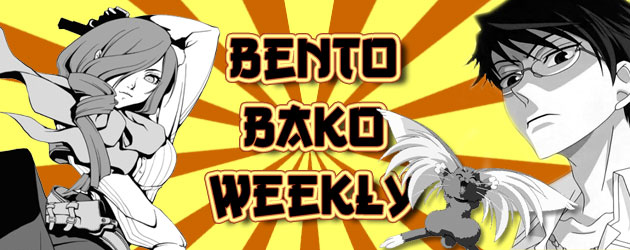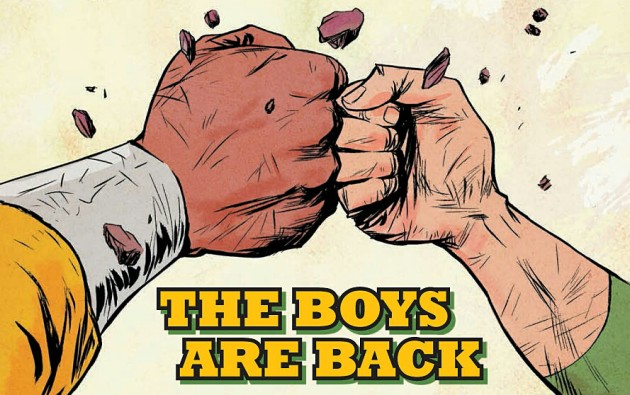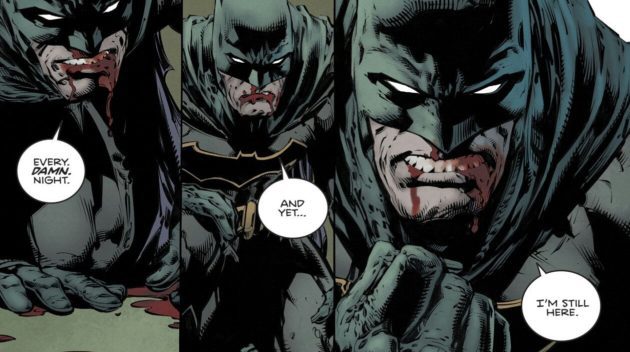 Title: Library Wars: Love & War
Title: Library Wars: Love & War
Author: Kiiro Yumi (original story by Hiro Arikawa)
Publisher: Viz Media (Shojo Beat)
Volume: Volumes 10 and 11, $9.99
Vintage: 2012, 2013 by Hakusensha; 2013, 2014 by Viz Media
Genre: Drama, romance
The previous story line involving an actor’s interview and the censorship of his grandfather’s profession wraps up quickly in volume 10. The next assignment takes the Library Forces to the Ibaraki Library, in Kasahara’s home town. The adjacent Modern Art Museum is hosting a piece called Freedom, a work of protest that features a torn MBC (Media Betterment Committee) uniform. Naturally the MBC pitches a fit over the insult, and plans for an all out war to prevent the exhibit from opening. However, due to the hierarchy in Ibaraki, their Library Forces are ill-prepared for such a task, so the Kanto Library Task Force must travel to Ibaraki to offer assistance. Immediately they’re accosted by a non-violent group that supports fighting against censorship without weapons, but Major Genda shuts them down, and immediately sets to preparing Ibaraki for war. Things are even worse than they thought, however, as Kasahara soon discovers within the girls’ dorm. The library Director and the Librarians have all but shut out the Library Forces, and have made them virtually useless. In the girls’ dorm, the Librarians bully the Library Forces and treat them like second class citizens. Kasahara, whose deeds have already made her a hero to the other girls, works hard to boost their confidence. Unfortunately she has her own problems, as her mother discovers the truth and comes to force Kasahara to abandon her job. Dojo gives her a stern talking to, and Kasahara is finally able to stand up to her mother. Word comes down that the MBC is preparing their attack, and Kasahara intends to remain by Dojo’s side no matter what.
The battle quickly begins in volume 11, as the MBC forces open fire with little warning. It’s an all-out, brutal fight, complete with snipers in the trees, an onslaught of bullets, and many injuries on both sides. As the battle’s end nears, the MBC forces become more desperate and charge at the Library forces, trampling and crushing their own men in the process. The result is gruesome, and Kasahara is forced to shoot the enemy for the first time. The brutal battle leaves her reeling, but Dojo is right next to her to offer his support. Even though the official battle comes to an end, trouble continues inside the museum as the library Director takes matters into her own hands and attempts to set fire to the building, devastated over the damage to her career. Elsewhere in the museum, Genda faces down the anti-violence protesters once again, but they’re interrupted by MBC supporters with a gun. Genda plants himself between the shooters and the artwork they’re protecting, and faces down a rain of bullets. In the end, both Genda and Ibaraki’s Commander end up in the hospital, but the museum and art are successfully protected, and the exhibit opens to great success. The Library Forces return victorious, but to bad news – Commander Inamine, in the face of backlash for the corruption found in Ibaraki under his command, resigns his position.
 While I certainly still enjoy the characters, their relationships, and their growth, the actual plot of this series is losing me. I can’t decide if the idea of the MBC is nonsensical or totally terrifying. They censored the word “barber” for goodness’ sake. It’s like they’re just turning to random pages in the dictionary, closing their eyes, and pointing to a word. Then they defend such decisions with guns. At first I found the concept interesting, but the longer the series continues, the less sense the world its set in makes. I want to know what happens to the characters, but I find myself thinking, “Is it over yet? How many more volumes do I need to read?” Kasahara is crying all the time now (we get it, she’s tough, but she also has an intense emotional side; we get it). Dojo is finally starting to show some self-realization in regards to his feelings for Kasahara, but goodness gracious is it slow going. Tezuka has probably made the most progress, with his efforts to make use of his brother’s position, as well as handing his feelings for Shibazaki. Komaki barely makes an appearance in these two volumes, and the feeling is that his personal story has pretty much concluded. There are a few shakeups, at least, as Commander Inamine steps down, and Genda gets promoted two ranks to Colonel. There’s a big shakeup at the Ibaraki library, but I doubt it will have an impact beyond these two volumes. The biggest changes, aside from Inamine’s departure, are the move toward acceptance by Kasahara’s mother for her daughter’s chosen profession, and the rising of an anti-violence faction that is likely in league with the MBC. Things do get a little gruesome in volume 11 when the MBC forces attack the Ibaraki library, as they’re willing to kill themselves just to keep a piece of art that disparages them from going on display. It does draw from reality (like journalist, actors, etc., who are arrested and/or punished for speaking out against their governments), but the scope is hard to believe. So is the method. The MBC announces the exact time and place of their attack, and then ends it at a specific time as well. If they’re so obsessed with stopping the museum, why don’t they keep going at all costs? They were trampling and killing each other just to get in there, then it all stops on the dot, and they pack up and leave. They are a government force, and they have rules to follow, rules that likely prevent all out continuous war, but it feels incredibly unrealistic at times. What I once praised and interesting and unique, I’m growing of deciphering.
While I certainly still enjoy the characters, their relationships, and their growth, the actual plot of this series is losing me. I can’t decide if the idea of the MBC is nonsensical or totally terrifying. They censored the word “barber” for goodness’ sake. It’s like they’re just turning to random pages in the dictionary, closing their eyes, and pointing to a word. Then they defend such decisions with guns. At first I found the concept interesting, but the longer the series continues, the less sense the world its set in makes. I want to know what happens to the characters, but I find myself thinking, “Is it over yet? How many more volumes do I need to read?” Kasahara is crying all the time now (we get it, she’s tough, but she also has an intense emotional side; we get it). Dojo is finally starting to show some self-realization in regards to his feelings for Kasahara, but goodness gracious is it slow going. Tezuka has probably made the most progress, with his efforts to make use of his brother’s position, as well as handing his feelings for Shibazaki. Komaki barely makes an appearance in these two volumes, and the feeling is that his personal story has pretty much concluded. There are a few shakeups, at least, as Commander Inamine steps down, and Genda gets promoted two ranks to Colonel. There’s a big shakeup at the Ibaraki library, but I doubt it will have an impact beyond these two volumes. The biggest changes, aside from Inamine’s departure, are the move toward acceptance by Kasahara’s mother for her daughter’s chosen profession, and the rising of an anti-violence faction that is likely in league with the MBC. Things do get a little gruesome in volume 11 when the MBC forces attack the Ibaraki library, as they’re willing to kill themselves just to keep a piece of art that disparages them from going on display. It does draw from reality (like journalist, actors, etc., who are arrested and/or punished for speaking out against their governments), but the scope is hard to believe. So is the method. The MBC announces the exact time and place of their attack, and then ends it at a specific time as well. If they’re so obsessed with stopping the museum, why don’t they keep going at all costs? They were trampling and killing each other just to get in there, then it all stops on the dot, and they pack up and leave. They are a government force, and they have rules to follow, rules that likely prevent all out continuous war, but it feels incredibly unrealistic at times. What I once praised and interesting and unique, I’m growing of deciphering.
Kris
kristin@comicattack.net
@girlg33k_kris
Review copies provided by Viz Media.



